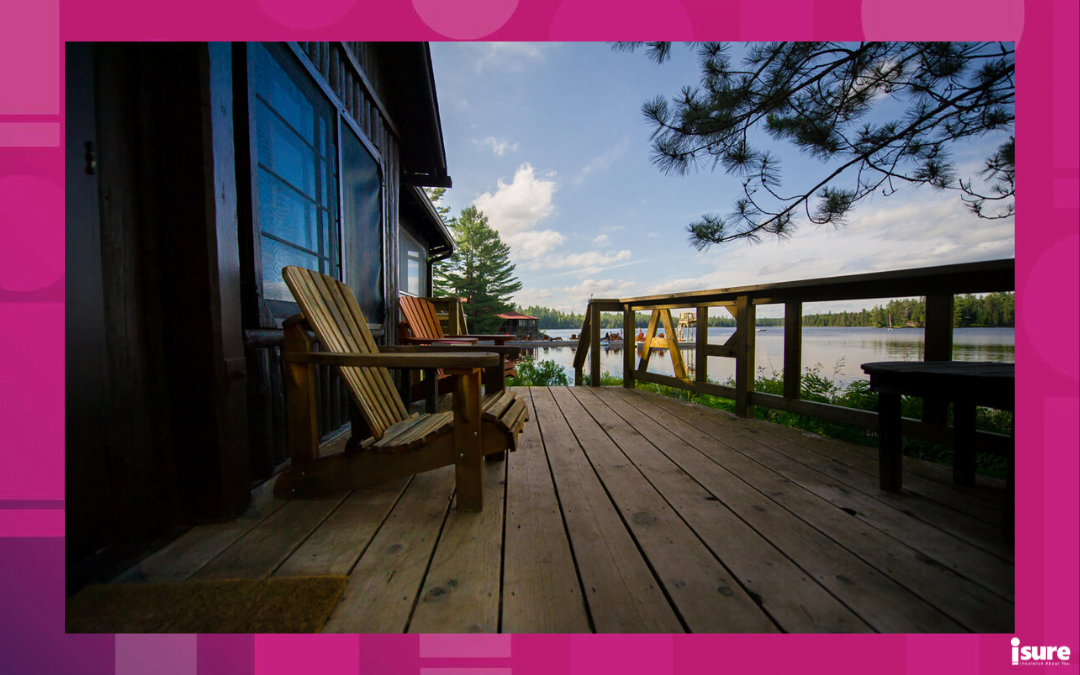Following a season of great memories and fun, it’s time for many cottage owners to close up for the season. The winter months can be harsh on a cottage. To protect your investment, owners must consider a number of things to keep their cottages safe. The last thing you want to have on your hands is insurance issues when you return. So, let’s consider some tips that can help minimize problems when closing the cottage for the season.
1. Tidy up before closing the cottage
This one may seem like the most obvious, but it can easily be forgotten! Make sure you take all of your valuables home with you. Some general maintenance, such as sweeping up and wiping things down, will allow for you to be greeted by a clean cottage next year. Remember to properly take out all garbage and recycling so as to not bring any unwanted smells or pests! Another great thing to keep in mind is to remove any loose paper, newspapers, or oil rags that can be potential fire hazards. Make sure chemicals, such as cleaners, are taken home with you or disposed of properly.
2. Electricity: On or off?
It may sound simple, but you need to think about whether or not you should keep your electricity on or off during the winter. Shutting down the power to your cottage with the main switch is generally recommended. However, if you have an alarm, it won’t work without power. If you turn off your main power, remember to turn off all major appliances, heaters and water heaters before flipping that main power switch. If you have an alarm you want to keep on at your cottage during the winter, it’s a good idea to unplug all your major appliances to avoid any danger and save yourself some money.
3. Don’t forget to turn your water off
Water can be a big issue if you turn off your cottage heat for the winter. Don’t just turn off your water, however. Make sure to drain your pipes, as well! Simply turn off the main water valve, then turn on your faucets and let all of the water run out. If you want to go the extra mile, you can also wrap your pipes in some cloth to keep them warm during the colder months. Trust us, nobody wants the hassle of a burst pipe when you’re opening up the cottage next spring! Don’t forget to also drain your cottage’s water tank, but remember to shut off the power first before doing so. If your cottage has a sump pump, make sure to double check that it is in working condition. This can save you from any potential flooding.
4. Check your septic tank
Most cottages will have a septic tank for sewage. Make sure you have kept your servicing up-to-date before closing up the cottage for the winter to avoid any forthcoming issues. Remember, the average septic tank needs to be serviced every 5-8 years, sometimes even less if its an older tank. It’s always best to get tasks like these out of the way so you can rest easy before going back in the spring!
5. Don’t invite unwanted furry guests
We all know how much wildlife is in cottage country. As cute as some of these critters may be, you don’t want them making a home inside your cottage when you are gone. Take a quick walk around your cottage to make sure there are no openings where critters can come in. Additionally, it’s super important to defrost and clean out your fridge while making sure there is absolutely no food left in it! If your cottage has a fireplace, make sure you close the damper and put a cap on the roof, if necessary. Another helpful tip is to throw some mothballs around the cottage while you are gone. This will put off any unwanted bugs or animals!
6. Check outside of the cottage
Before you head off for the season, it’s crucial to inspect the outside of your cottage. Focus mainly on your roof. Water damage from missing shingles can be a huge problem, so replace any missing shingles before closing up. If it’s time for a new roof, get it done by a reputable roofing contractor during the warmer months. Make sure to also trim any branches hanging over your cottage. Over the winter, the weight of the ice and snow can snap branches that may fall onto your cottage. In addition to this, make sure you close your dampers and seal all stove pipes and chimneys with metal caps. Ensure your eavestroughs are clean, as leaf accumulation can slow water drainage when snow begins to melt in the spring.
7. Close your pool (if you have one)
Not everyone has a pool at their cottage, but the ones who do have to close it up when the warm weather leaves. This applies even if you go to your cottage in the winter! There are a few steps to follow in order to make sure your pool is properly closed:
- Begin by cleaning out your pool. Fish out any leaves, dirt, dead insects and other debris. This will stop algae from making a home in your pool when it’s closed up. Don’t forget to scrub the sides of your pool of any dirt and debris, and give it a quick vacuum before closing it up for the season!
- Remove your pool equipment. Floats, hoses, cleaners or railings! Clean them, dry them and store in a dry, safe space, like a shed.
- Lower your pool water level. Freezing temperatures can freeze the water and damage your pool lining. You should make sure its roughly five inches below the skimmer if your pool is vinyl lined, and five inches below the tile line if your pool is plaster. You’re also going to want to make sure all of the water is drained from your pump and/or heater. If there is even a tiny amount of water stuck in the filter, it can freeze and expand, causing extensive (and costly) damage.
- Make sure your pipes are clear and wrapped up. Do this by unscrewing the pool’s pipes and making sure there is no settled water in them, which can freeze and cause potential bursting!
8. Plan ahead
This one is the most simple, but just as important as the rest! We know you can be in a rush to hit the road and beat any traffic home, but it’s a good idea to take note of any maintenance or repairs that can wait until the next season. If you find your dock needs to be fixed or your deck is due for a revamp, take note of it and plan ahead to fix it. This way, you can head up there in the spring and get your repairs done so that when summer rolls around again, you can enjoy the cottage!
9. Now, it’s time for closing the cottage
You’ve completed the list above and now, it’s time to head out on the road home. Make sure all buildings are locked and secured! If you have a trusted neighbour that sticks around all year, ask them to keep an eye on your cottage throughout the winter. Or, drive up yourself to keep an eye on things if you wish to do so. For some additional security, install a video doorbell, cameras and an alarm around the property. This will help if you just want to check in from home from time to time!
Most importantly, remember spring is not that far away, and the cold weather will pass. If an issue arises when you do head back to the cottage, contact isure today to submit a claim.




